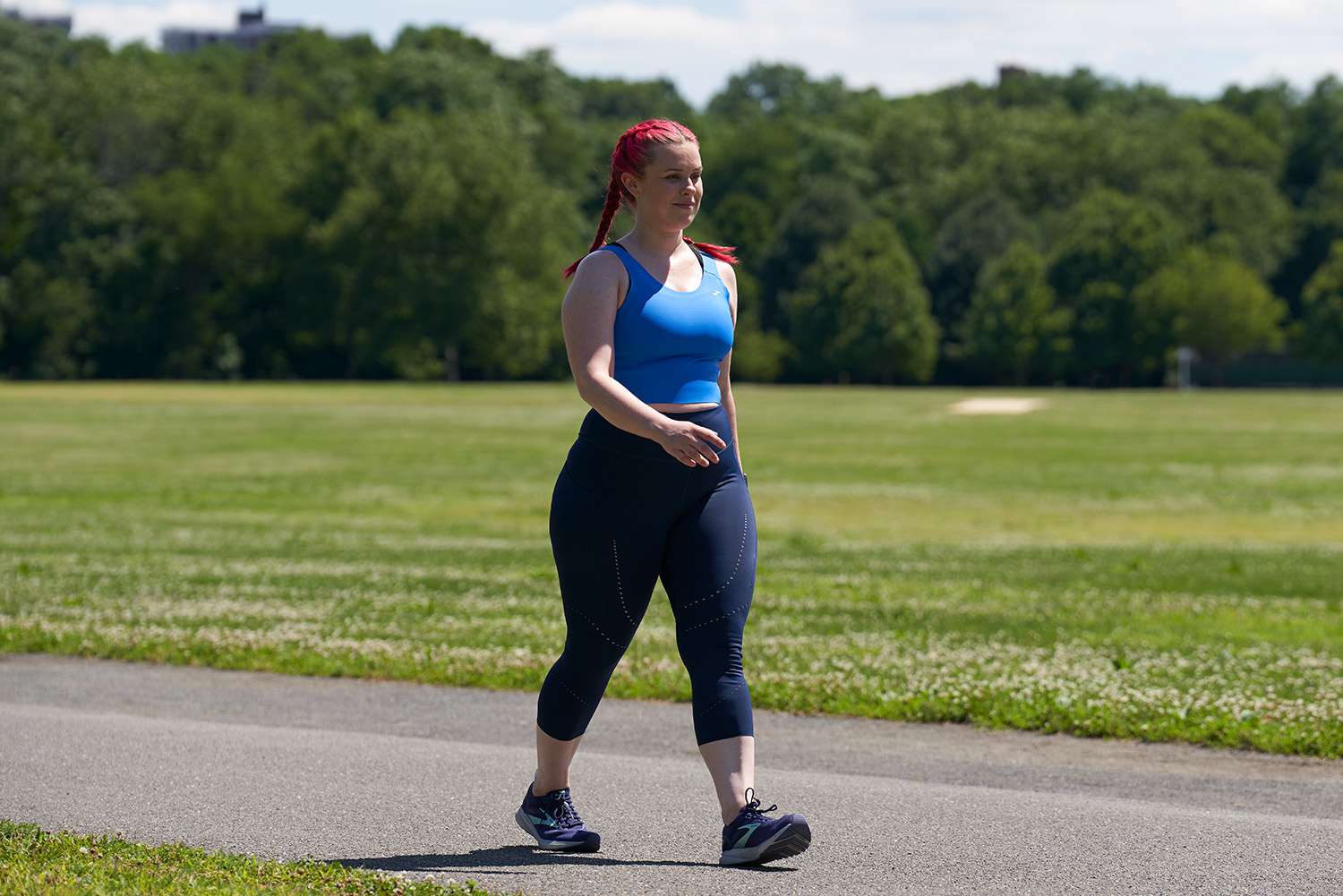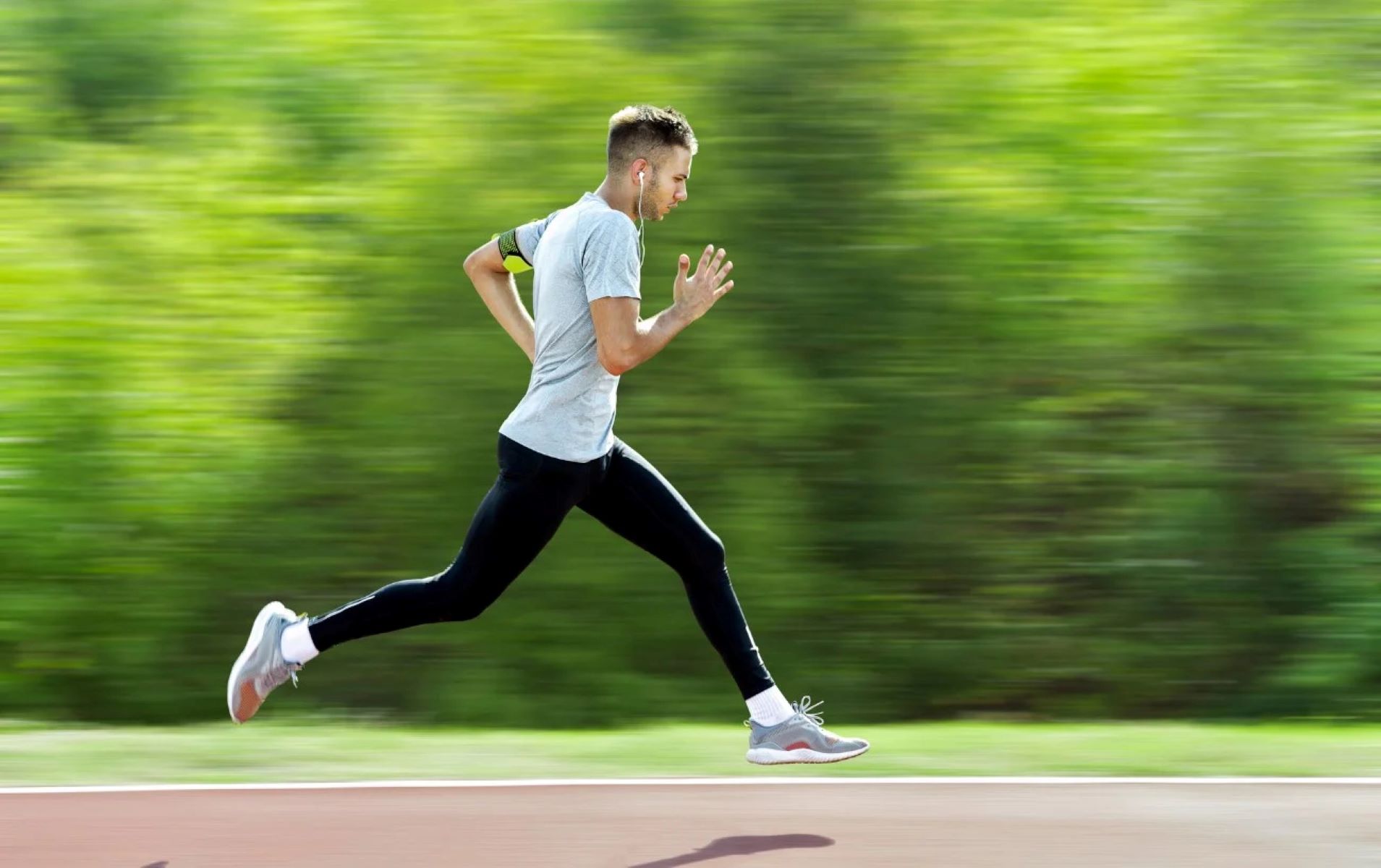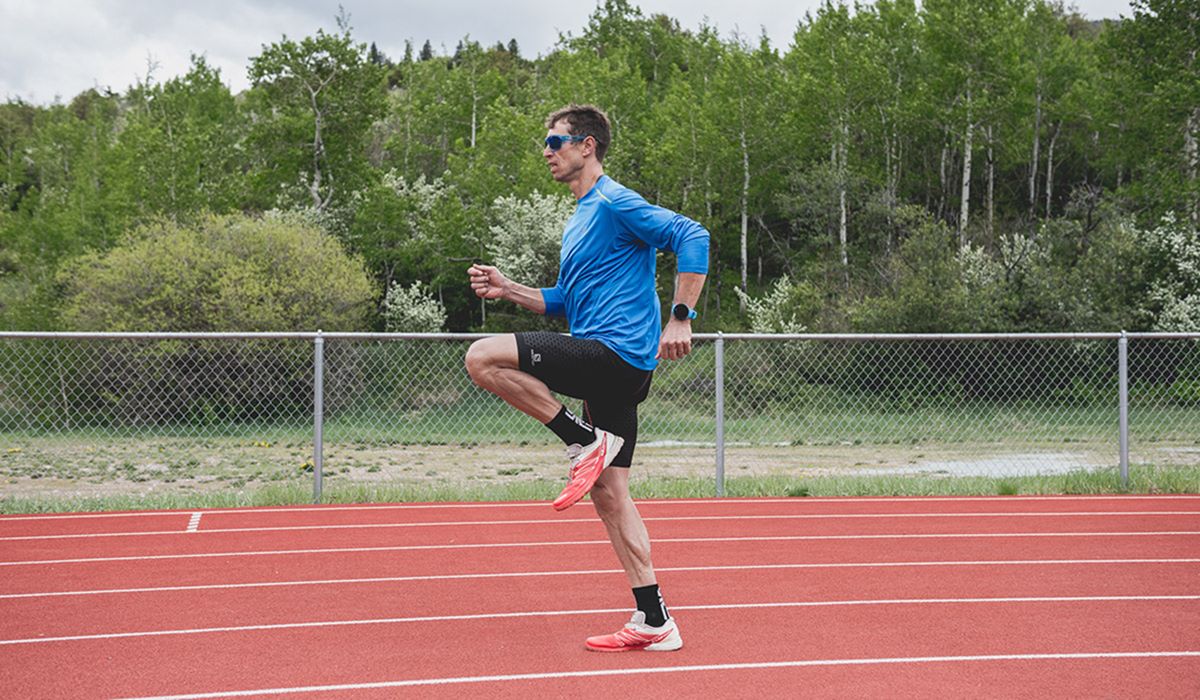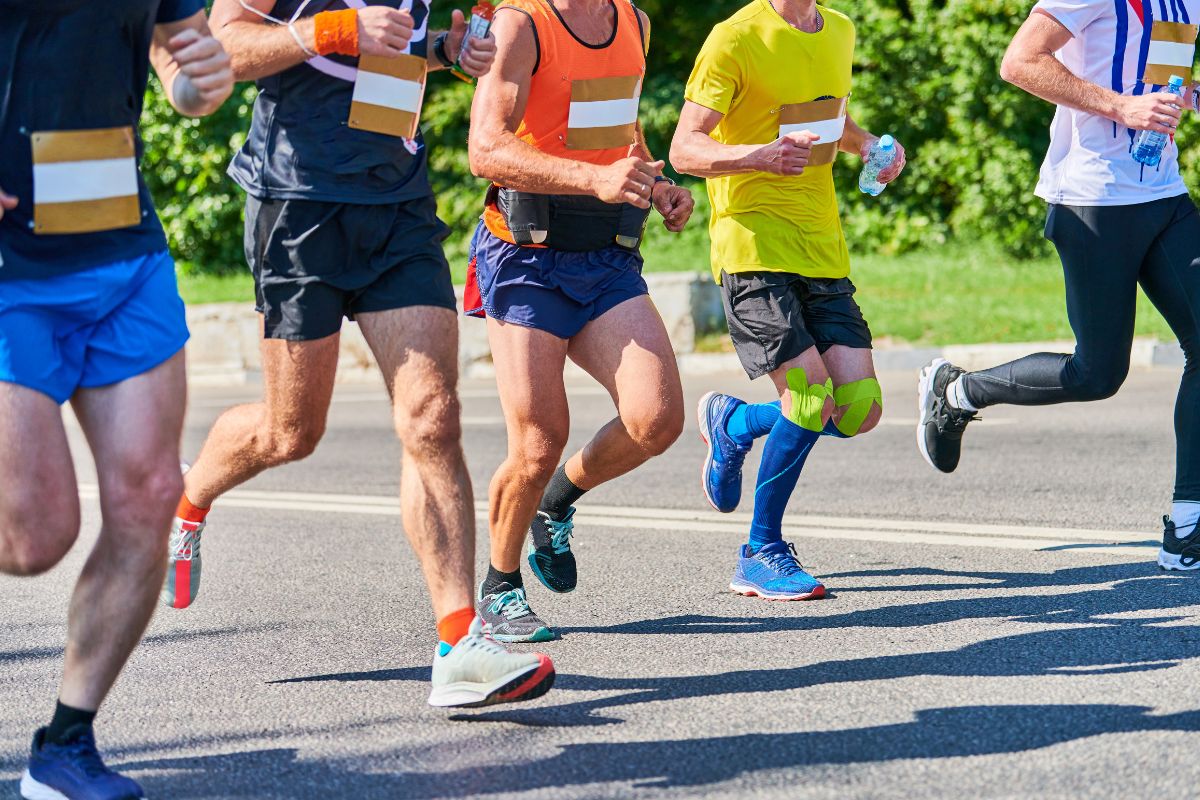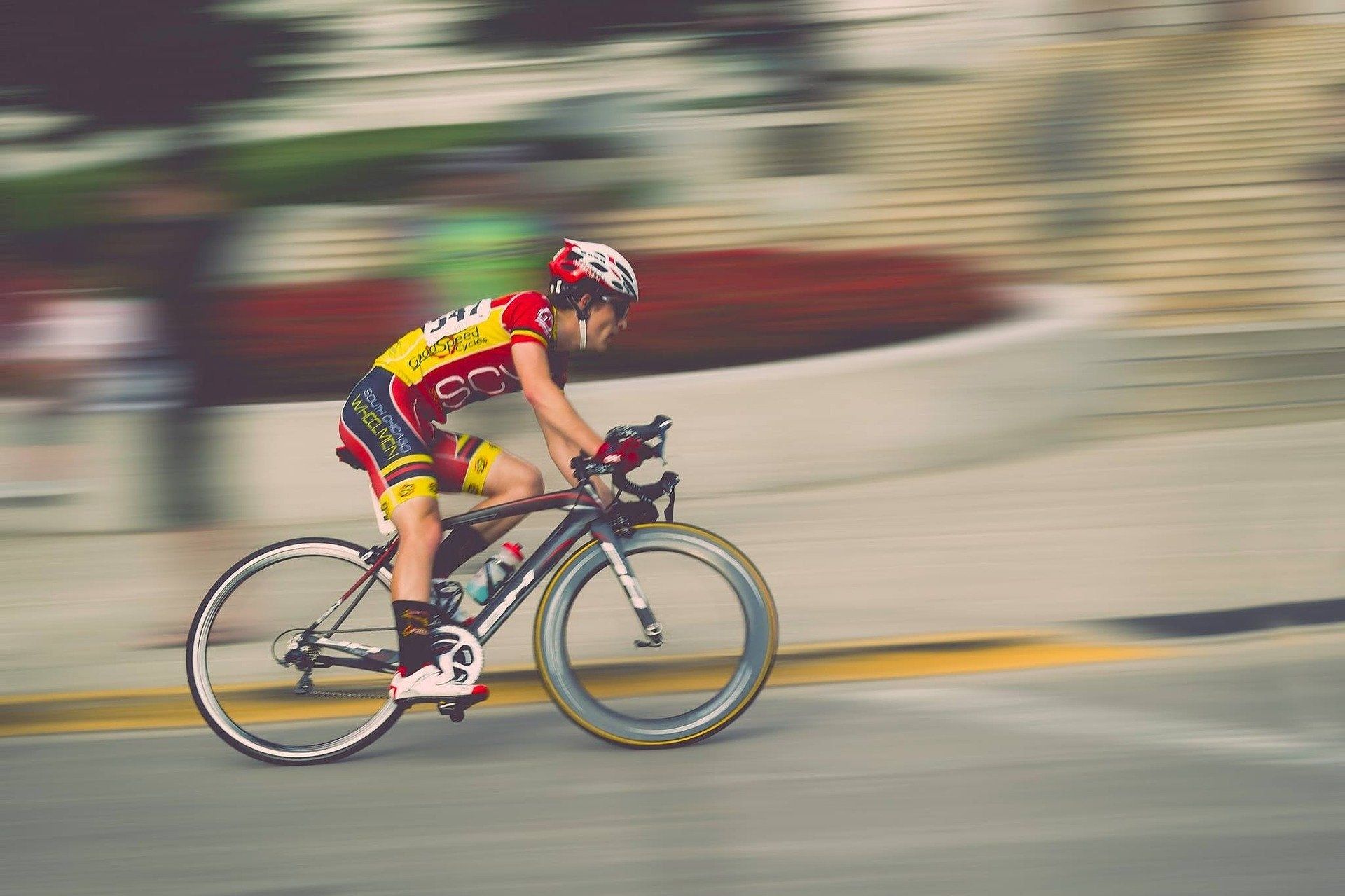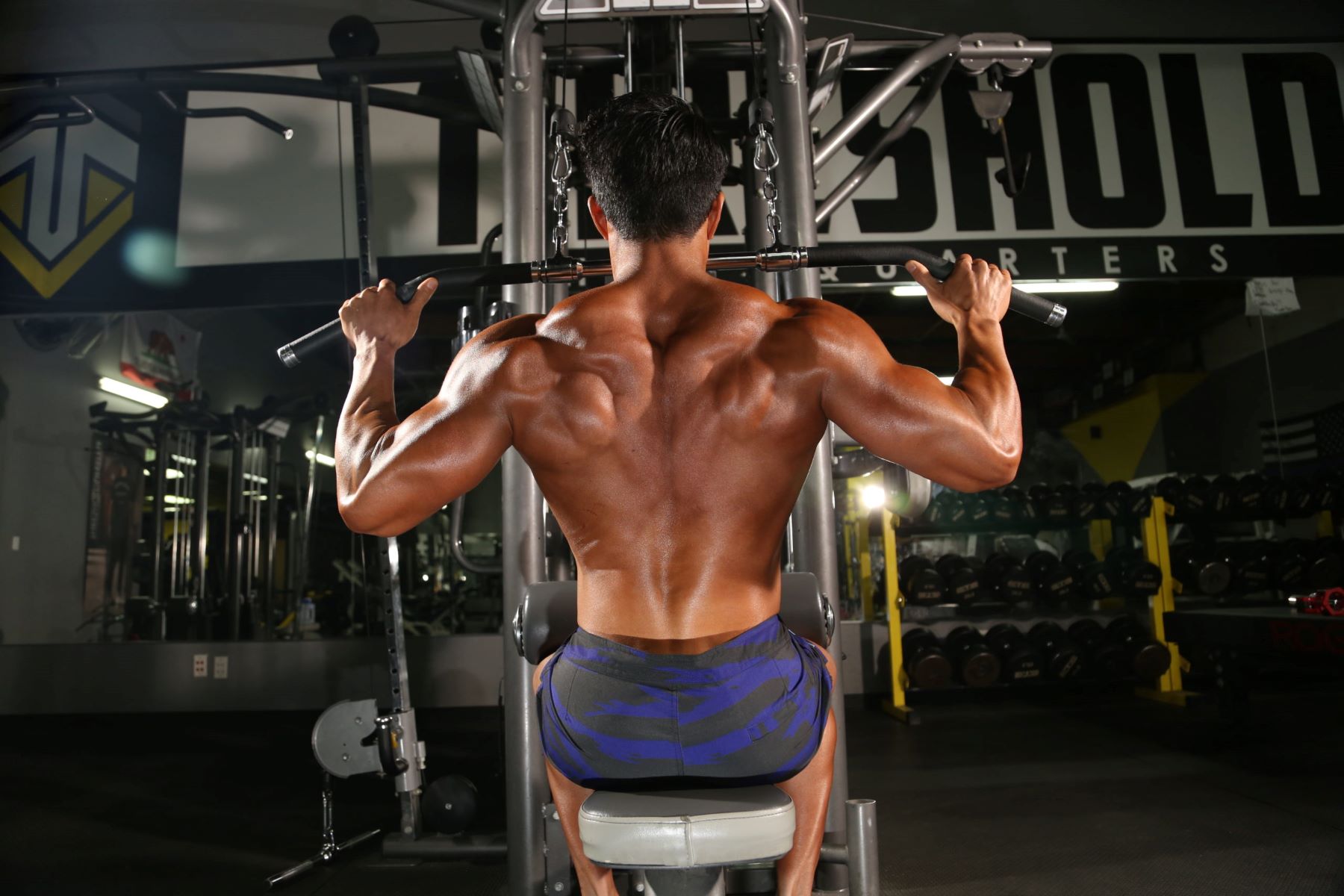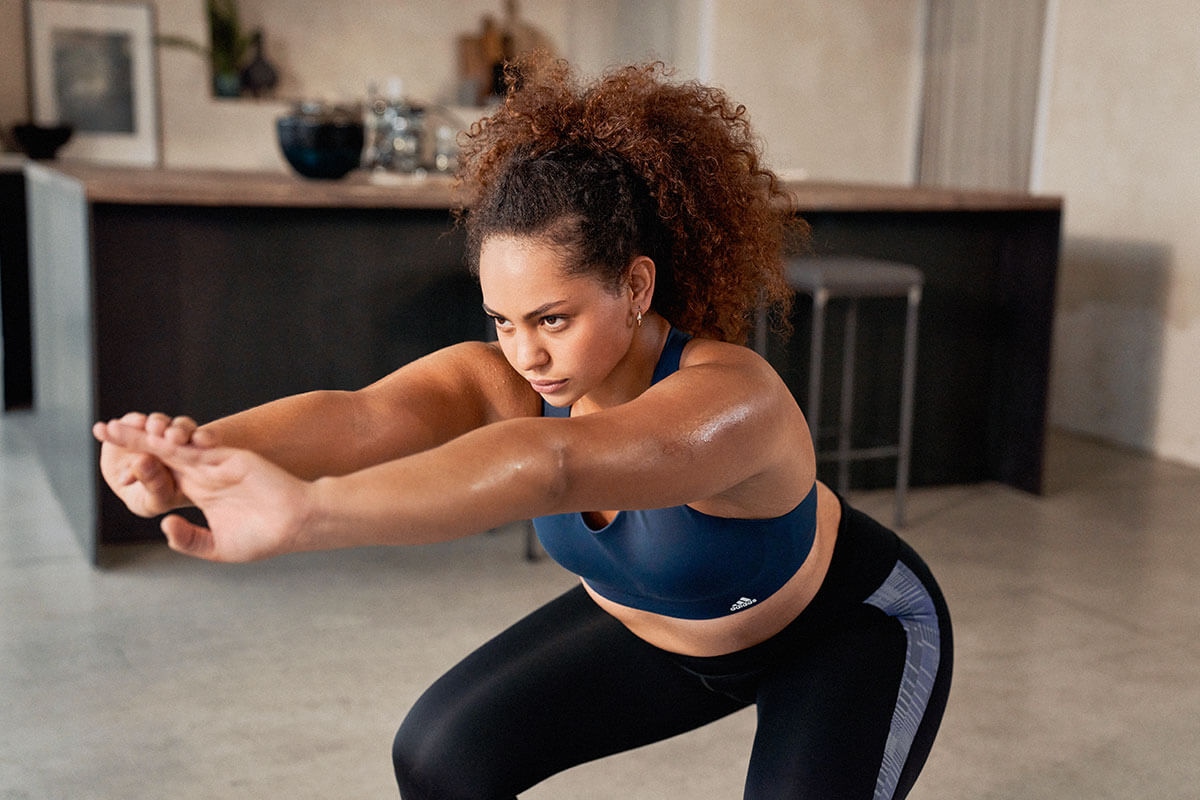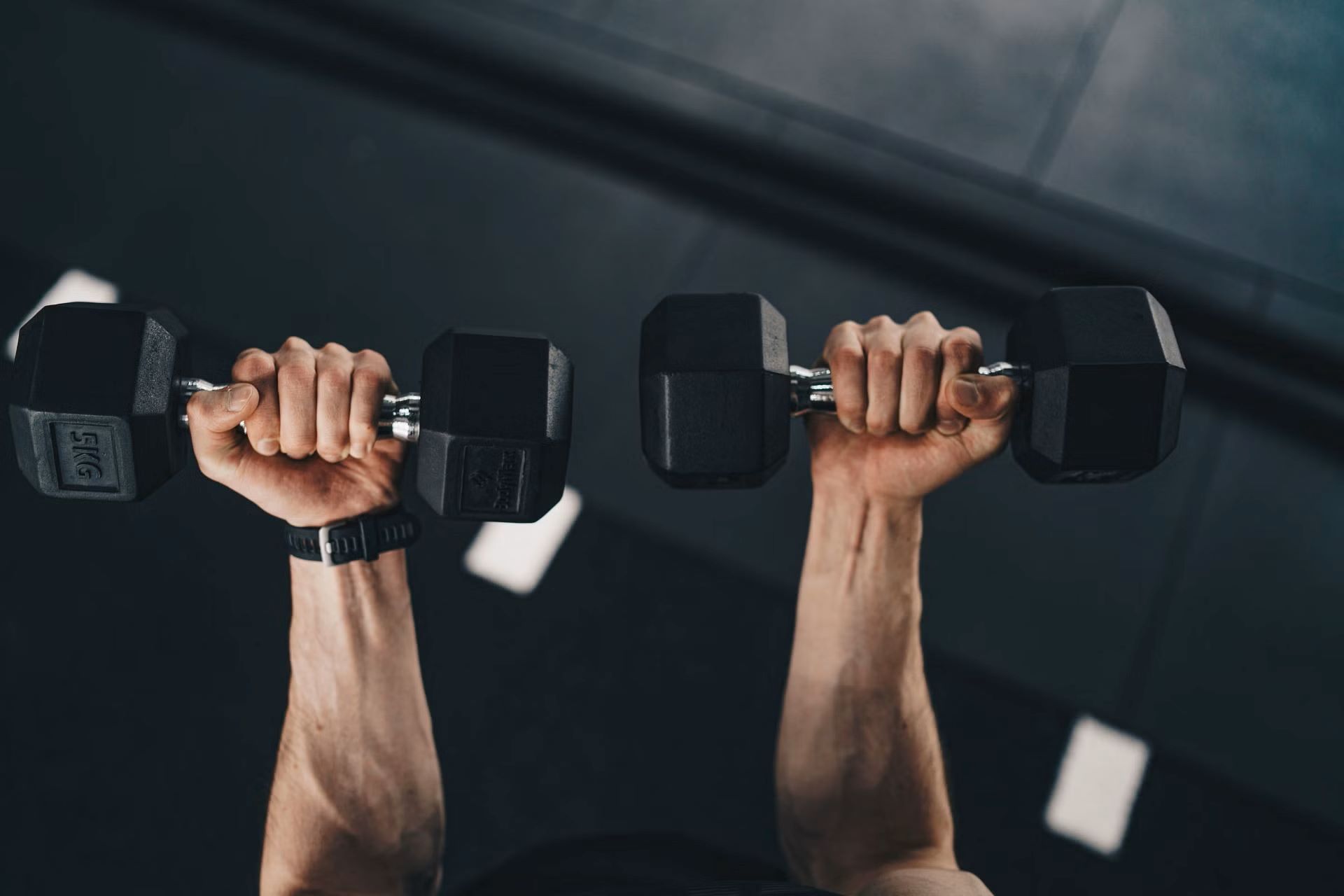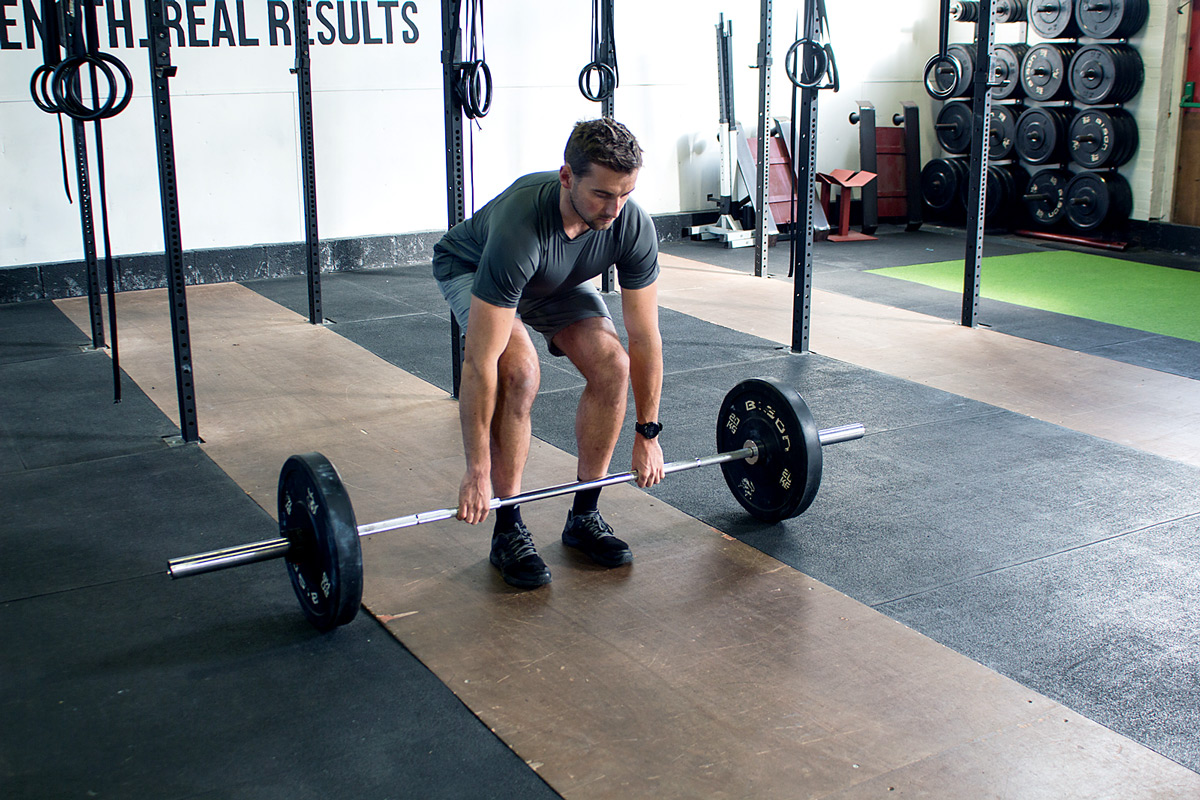

Featured
How Do Deadlifts Affect Distance Running
Modified: January 2, 2024
Discover how deadlifts, a featured exercise, impact your distance running performance in this insightful article. Learn how to incorporate deadlifts into your training routine for optimal results.
Introduction
Distance running is a demanding sport that requires strength, endurance, and resilience. While runners typically focus on cardiovascular training and specific running exercises, such as intervals and hill repeats, incorporating strength training into their routine can offer numerous benefits. One exercise that stands out in particular is the deadlift.
The deadlift is a compound movement that targets multiple muscle groups, including the hamstrings, glutes, quads, and lower back. It involves lifting a loaded barbell from the ground to a standing position while maintaining proper form. While deadlifts are commonly associated with powerlifting and bodybuilding, they can also be incredibly beneficial for distance runners.
Contrary to popular belief, deadlifts do not bulk up the muscles, but rather help develop strength, power, and stability. By incorporating deadlifts into their training regimen, distance runners can experience improvements in muscle activation, running form and efficiency, power and speed, as well as reduce the risk of injuries.
This article will explore the specific benefits of deadlifts for distance running, including muscle activation and strengthening, improved running form and efficiency, enhanced power and speed, and injury prevention. We will also discuss how runners can incorporate deadlifts into their training and provide guidance on proper deadlift technique and recommended variations for distance runners.
The Benefits of Deadlifts for Distance Running
Deadlifts offer a range of benefits that specifically cater to the needs of distance runners. Let’s explore some key advantages:
Muscle Activation and Strengthening
Deadlifts engage multiple muscle groups, including the hamstrings, glutes, quads, and lower back. By regularly performing deadlifts, distance runners can strengthen these muscles, leading to improved overall strength and stability. Strong muscles are crucial in maintaining proper running form and reducing the risk of injuries.
Improved Running Form and Efficiency
Deadlifts have a direct impact on the muscles and movements involved in running. Strengthening the hamstrings and glutes through deadlifts can improve hip extension, which is essential for generating power and forward propulsion. Additionally, a strong lower back and core can help runners maintain proper posture and reduce energy leakage, leading to improved running efficiency.
Enhanced Power and Speed
Deadlifts are a highly effective exercise for building explosive power. By incorporating deadlifts into their training routine, distance runners can improve their ability to generate force, resulting in increased speed. The strong muscles developed through deadlifts enable runners to generate more power with each stride, leading to improved performance during sprints and finishing kicks.
Injury Prevention and Core Stability
One of the major benefits of deadlifts is their ability to strengthen the core muscles, including the abdominals, obliques, and lower back. A strong core is crucial for maintaining proper running form and stability, effectively transferring the forces generated during the running motion and reducing the risk of injuries. By incorporating deadlifts into their training, distance runners can develop a strong and stable core, leading to better overall performance and a reduced risk of common running injuries.
By incorporating deadlifts into their training regimen, distance runners can reap the benefits of improved muscle activation and strengthening, enhanced running form and efficiency, increased power and speed, and reduced risk of injuries. In the following sections, we will delve into how runners can effectively incorporate deadlifts into their training routines, proper deadlift technique for runners, and recommended deadlift variations for distance runners.
Muscle Activation and Strengthening
Deadlifts are a compound exercise that engages multiple muscle groups simultaneously. When performed correctly, they activate and strengthen key muscles that are essential for distance running.
The primary muscle groups targeted by deadlifts include the hamstrings, glutes, quads, and lower back. These muscles play a crucial role in providing power, stability, and propulsion during running.
By incorporating deadlifts into their training routine, distance runners can experience significant improvements in muscle activation and strength. Here’s how:
Hamstrings
The hamstrings are a group of muscles located at the back of the thigh. They are responsible for knee flexion and hip extension, both of which are essential for the running motion. Deadlifts require a strong contraction of the hamstrings to lift the weight from the ground. Over time, this leads to increased hamstring strength, allowing runners to generate more power with each stride and reduce the risk of hamstring strains or pulls.
Glutes
The glutes are the largest muscle group in the body and play a crucial role in hip extension, which is a key component of the running stride. Deadlifts target the gluteus maximus, the primary muscle responsible for hip extension. As runners strengthen their glutes through deadlifts, they can improve their ability to drive their hips forward, resulting in a more powerful and efficient running stride.
Quads
The quadriceps, located at the front of the thigh, are responsible for knee extension. While deadlifts primarily target the posterior chain, they also engage the quads to a certain extent. Strengthening the quads through deadlifts can provide runners with better knee stability, particularly during downhill running. This can help reduce the risk of knee injuries and improve overall running performance.
Lower Back
Strong lower back muscles are essential for maintaining good posture and stability while running. Deadlifts require a strong contraction of the lower back muscles to maintain a neutral spine throughout the movement. By regularly incorporating deadlifts into their training routine, runners can strengthen their lower back muscles, improving their ability to maintain proper form during long runs and reducing the risk of lower back pain or injury.
Overall, deadlifts are a highly effective exercise for activating and strengthening the key muscle groups involved in distance running. By consistently incorporating deadlifts into their training routine, runners can develop stronger hamstrings, glutes, quads, and lower back muscles, leading to improved performance, reduced risk of injuries, and enhanced overall running efficiency.
Improved Running Form and Efficiency
Proper running form is essential for distance runners to maximize their performance and reduce the risk of injuries. Deadlifts can have a significant impact on improving running form and overall running efficiency. Here’s how:
Hip Extension
Deadlifts target the posterior chain muscles, including the hamstrings and glutes, which are responsible for hip extension. Hip extension refers to the movement of the hip joint, where the leg moves from a flexed position behind the body to an extended position in front. This movement is crucial for generating power and propelling the runner forward. By strengthening the hamstrings and glutes through deadlifts, runners can improve their ability to extend their hips fully, resulting in a more powerful running stride.
Posture and Alignment
Deadlifts promote proper posture and alignment, which are essential for maintaining efficient running form. During a deadlift, the core muscles, including the abdominals and lower back, are engaged to stabilize the spine. This core stability translates directly to running by helping runners maintain a tall and upright posture, reducing unnecessary energy expenditure and improving breathing mechanics.
Reduced Energy Leakage
Efficient running form minimizes energy leakage, maximizing the runner’s overall efficiency and endurance. Deadlifts improve overall body awareness and strengthen the muscles involved in maintaining proper running form. Stronger core muscles, which are developed through deadlifts, help runners maintain stability, especially in the later stages of a long run. This stability is vital for decreasing excessive side-to-side movement and wasted energy.
Increased Cadence
Deadlifts can also increase running cadence, which refers to the number of steps a runner takes per minute. A higher cadence is associated with more efficient running and reduced ground contact time. Deadlifts develop power and strength in the muscles used for hip extension and knee flexion, allowing runners to generate more force with each stride. This increased power output can result in a faster turnover and a higher running cadence.
By incorporating deadlifts into their training routine, distance runners can improve their running form, maintain better posture and alignment, minimize energy leakage, and increase their running cadence. These improvements lead to greater running efficiency, reduced risk of injuries, and enhanced overall performance.
Enhanced Power and Speed
Deadlifts are well-known for their ability to increase strength and power, making them an excellent exercise for enhancing running speed and overall performance. Here are the key ways in which deadlifts can improve power and speed for distance runners:
Explosive Strength
Deadlifts are a compound exercise that requires the muscles to generate force and power to lift the weight from the ground. By regularly performing deadlifts, runners can develop explosive strength, which is essential for generating power during the running stride. The strong contraction of the muscles in the posterior chain, such as the hamstrings and glutes, can result in a more forceful push-off and increase stride length, leading to improved speed and power.
Increased Muscle Activation
Deadlifts engage multiple muscle groups simultaneously, including the hamstrings, glutes, quads, and lower back. As a result, the muscles used for running are trained to work together efficiently, leading to increased muscle activation during running. This enhanced muscle activation can result in a more powerful and coordinated running stride, enabling runners to generate more speed and maintain a faster pace.
Improved Rate of Force Development
Rapid force development is crucial for sprinting and quick acceleration. Deadlifts train the muscles to generate force quickly and efficiently, improving the rate of force development. This means that runners can generate more power in a shorter amount of time, resulting in explosive bursts of speed during sprints or races. The increased rate of force development can also help runners maintain a faster pace for longer periods of time, improving overall speed endurance.
Stronger Propulsion
The propulsion phase of the running stride is where the foot pushes off the ground to propel the body forward. Deadlifts target the muscles responsible for this movement, such as the glutes and hamstrings, strengthening them to enhance the force and power generated during propulsion. With stronger propulsion, runners can experience a faster and more efficient forward drive, resulting in improved speed and acceleration.
By incorporating deadlifts into their training routine, distance runners can enhance their power and speed. The explosive strength, increased muscle activation, improved rate of force development, and stronger propulsion developed through deadlifts can lead to significant improvements in speed and overall running performance.
Injury Prevention and Core Stability
In addition to improving strength and speed, deadlifts also play a crucial role in injury prevention and developing core stability. Here’s why these benefits are essential for distance runners:
Injury Prevention
Distance running puts a significant amount of stress on the body, increasing the risk of common running injuries, such as shin splints, IT band syndrome, and runner’s knee. Incorporating deadlifts into a training routine can help prevent these injuries by strengthening the muscles and improving overall body alignment and stability. Deadlifts target the glutes, hamstrings, and lower back, which are often weaker areas in runners. Strengthening these muscles through deadlifts can provide better support and protection for joints and reduce the likelihood of overuse injuries.
Core Stability
A strong and stable core is crucial for maintaining proper running form, stability, and balance. Deadlifts engage the core muscles, including the abdominals and lower back, to stabilize the spine during the lifting motion. This core stability carries over to running, helping runners maintain a tall posture and reducing excessive rotation or side-to-side movement. By incorporating deadlifts into their training routine, runners can develop a stronger core, resulting in enhanced stability, reduced risk of injuries, and improved overall performance.
Better Balance and Coordination
Deadlifts require balance and coordination to maintain proper form and lift the weight. As runners perform deadlifts regularly, their balance and coordination improve, leading to greater stability during running. This improved balance can help runners navigate uneven terrain and obstacles, reducing the risk of trips and falls. Additionally, better coordination allows runners to use their muscles more efficiently, resulting in improved running economy and optimal energy utilization.
Improved Posture and Alignment
Proper posture and alignment are essential for efficient running and reducing the risk of injuries. Deadlifts promote a neutral spine and proper body mechanics, which translate into better posture during running. By strengthening the muscles involved in maintaining proper posture, such as the core and back muscles, deadlifts can help runners maintain an upright position, reducing unnecessary stress on the joints and muscles.
By incorporating deadlifts into their training routine, distance runners can benefit from injury prevention, enhanced core stability, better balance and coordination, and improved posture and alignment. These benefits contribute to overall durability, reduce the risk of injuries, and improve running performance on both the training roads and race courses.
Incorporating Deadlifts into Running Training
To fully harness the benefits of deadlifts for distance running, it’s important to integrate them strategically into your training routine. Here are some key considerations for incorporating deadlifts into your running training:
Consistency and Progression
Consistency is key when adding deadlifts to your training plan. Start by incorporating deadlifts into your routine once or twice a week, gradually increasing the frequency as your body adapts. Begin with lighter weights and focus on perfecting your form before gradually increasing the load. Progressive overload is important for continued strength gains, so regularly reassess your lifting capacity and aim to gradually increase the resistance.
Balance with Running Volume
While deadlifts offer numerous benefits, it’s essential to strike a balance with your running volume. Ensure that your overall training plan takes into account adequate recovery and avoids excessive fatigue. Depending on your individual needs and goals, you might consider adjusting your running mileage or intensity to accommodate your deadlift sessions and allow for optimal recovery.
Timing and Structure of Workouts
Consider both the timing and structure of your workouts when incorporating deadlifts. Ideally, perform deadlifts on days when you have sufficient rest or recovery time following the session. Avoid placing deadlifts on consecutive days with high-intensity running workouts to allow adequate muscle recovery. Additionally, consider structuring your training week to alternate hard and easy days to optimize recovery and performance in both running and strength training.
Integration with Other Strength Exercises
While deadlifts are a highly effective exercise, it’s important to incorporate a variety of strength exercises to target different muscle groups and movement patterns. Supplement your deadlifts with exercises such as squats, lunges, calf raises, and planks to ensure overall muscle balance and reduce the risk of muscle imbalances or overuse injuries.
Listen to Your Body
Every runner’s body is unique, so listen to your body and adjust your training accordingly. Pay attention to any signs of fatigue, excessive muscle soreness, or discomfort. If needed, consult with a coach or a fitness professional to personalize your training plan and ensure that deadlifts and running are complementing each other effectively.
By incorporating deadlifts strategically into your running training, you can reap the benefits of improved muscle activation, enhanced running form, increased power and speed, injury prevention, and core stability. Maintain a balanced approach, be consistent, and listen to your body to optimize both your strength and running performance.
Proper Deadlift Technique for Runners
Performing deadlifts with proper technique is crucial to maximize the benefits and minimize the risk of injury. Follow these steps to ensure proper deadlift form:
1. Set up the Barbell
Position the barbell on the ground, ensuring it is centered with your feet. Place your feet shoulder-width apart, with the barbell over the middle of your feet. Adjust the barbell height so that it sits just above your ankles.
2. Position your Hands and Grip
Place your hands just outside your knees, slightly wider than shoulder-width apart. Your grip can be either overhand (double overhand grip) or mixed, where one hand is overhand and the other hand is underhand. Choose a grip that feels comfortable and secure for you.
3. Set your Hips and Back
Begin the movement by hinging at the hips, pushing them back while maintaining a slight bend in your knees. Keep your chest up and engage your core to maintain a neutral spine throughout the movement. Avoid rounding your back or hyperextending your lower back.
4. Lift the Barbell
As you initiate the lift, drive through your heels and engage your glutes and hamstrings to lift the barbell off the ground. Stand up tall, ensuring your hips and shoulders rise together in a controlled manner. Keep the barbell in close contact with your body as you lift, maintaining proper alignment.
5. Lower the Barbell
To lower the barbell back to the starting position, hinge at the hips while maintaining a neutral spine. Push your hips back and gradually lower the barbell to the ground, maintaining control throughout the descent. Repeat the deadlift movement for the desired number of reps.
6. Maintain Proper Breathing
When performing deadlifts, it’s important to maintain proper breathing technique. Inhale deeply before starting the lift and brace your core. As you lift the barbell, exhale forcefully through pursed lips, engaging your core muscles and maintaining stability.
7. Seek Professional Guidance
If you are a beginner or new to deadlifts, it is advisable to seek guidance from a qualified strength and conditioning coach or personal trainer. They can assess your form, offer feedback, and help you progress safely and effectively.
Proper deadlift technique is essential to ensure safety and optimize the benefits of this exercise for runners. Mastering the correct form will not only improve your strength but also help prevent injuries and enhance your overall running performance.
Recommended Deadlift Variations for Distance Runners
Beyond the traditional deadlift, there are several variations that can provide valuable benefits for distance runners. Incorporating these variations into your training routine can help target specific muscle groups, enhance overall strength, and improve running performance. Here are some recommended deadlift variations for distance runners:
Sumo Deadlift
The sumo deadlift is performed with a wider stance and the hands placed inside the knees. This variation places more emphasis on the inner thighs, glutes, and quads. The sumo deadlift can help strengthen the hip adductors, which are important for stability and power during running.
Single-Leg Deadlift
The single-leg deadlift, also known as the unilateral deadlift, is performed by lifting the weight with one leg while keeping the other leg off the ground. This variation improves balance, stability, and core strength, while also targeting the hamstrings and glutes. It helps address any muscle imbalances between the left and right sides of the body and enhances running efficiency by mimicking the single-leg movement during running.
Romanian Deadlift
The Romanian deadlift (RDL) is a variation that focuses on the hamstrings and glutes. In the RDL, the movement begins with a slight knee bend and emphasizes the hip hinge. This variation increases hip flexion and strengthens the posterior chain, helping to improve stride length and running power.
Trap Bar Deadlift
The trap bar deadlift, also known as the hex bar deadlift, utilizes a specialized barbell that the lifter stands inside. This variation allows for a more upright torso position, reducing stress on the lower back. The trap bar deadlift is an effective alternative for runners with lower back issues or those who have difficulty maintaining proper form with a traditional barbell deadlift.
Deficit Deadlift
In the deficit deadlift, the lifter stands on a raised platform, such as weight plates or blocks, which increases the range of motion. This variation strengthens the muscles used in the initial phase of the lift, particularly the hamstrings and glutes. Incorporating deficit deadlifts can benefit runners by enhancing power and speed during acceleration.
When incorporating these deadlift variations into your training routine, ensure that you maintain proper form and start with lighter weights to focus on technique. Gradually increase the intensity and volume as you become more comfortable and proficient in each variation. It is also advisable to seek guidance from a fitness professional to ensure proper execution and to tailor the variations to your specific needs and goals.
By incorporating these recommended deadlift variations, distance runners can target specific muscle groups, improve strength and power, address muscle imbalances, and enhance running performance. Remember to progress gradually, listen to your body, and enjoy the benefits of incorporating these variations into your training routine.
Conclusion
Incorporating deadlifts into a distance runner’s training routine can have numerous benefits, including increased muscle activation and strength, improved running form and efficiency, enhanced power and speed, reduced risk of injuries, and enhanced core stability. Deadlifts target key muscle groups, such as the hamstrings, glutes, quads, and lower back, which are essential for distance running performance.
By consistently incorporating deadlifts into their training regimen, runners can experience improvements in muscle strength and activation, leading to enhanced overall performance and reduced risk of injuries. Furthermore, deadlifts help in developing core stability, providing better running form, balance, and running economy.
When incorporating deadlifts, it is important to focus on proper technique, gradually increase the intensity, and balance them with running volume to ensure adequate recovery. Deadlift variations, such as sumo deadlifts, single-leg deadlifts, Romanian deadlifts, trap bar deadlifts, and deficit deadlifts, can provide additional benefits by targeting specific muscle groups and addressing muscle imbalances.
If you are new to deadlifts or have specific concerns, seeking guidance from a knowledgeable trainer or coach can ensure proper form and maximize the benefits while reducing the risk of injury.
In conclusion,
Deadlifts are a valuable addition to a distance runner’s training routine, offering a range of benefits that improve strength, power, running form, and injury prevention. By incorporating proper deadlift technique and variations, runners can enhance their overall performance and reduce the risk of injury, ultimately achieving their running goals.

